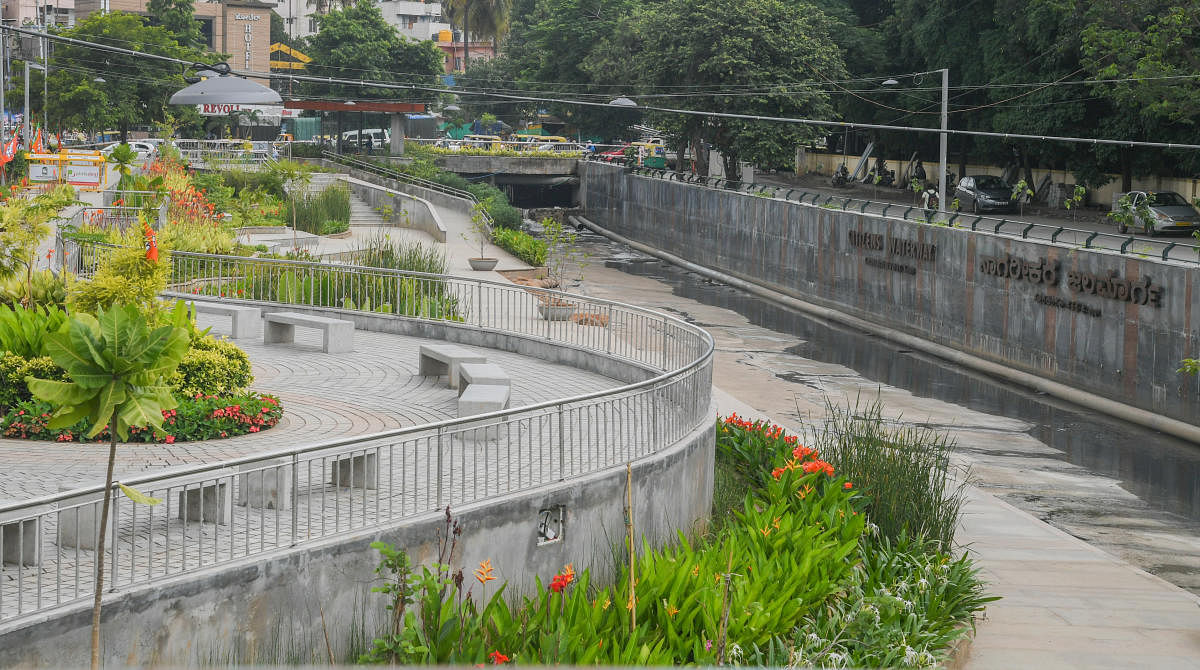
Despite investing hundreds of crores to replace underground drainage (UGD) lines and upgrade sewage treatment plants (STPs), the BWSSB is unable to halt huge sewage flowing into the Koramangala Valley.
This has exposed shortcomings in the agency’s first-ever attempt to transform a sewage-filled stormwater drain (SWD) into a green and clean waterway with various amenities.
Persistent influx of sewage into the drain, specifically from Bellandur, Ejipura, Shantinagar, and close to KR Market, has also cast doubt on the completion of the Rs 180-crore project, which is progressing at a snail’s pace.
The Bruhat Bengaluru Mahanagara Palike (BBMP) now estimates that the project will not be finished until July.
Despite lavishing Rs 125 crore to build a brand new UGD system near Ejipura and Shantinagar, the Bangalore Water Supply and Sewerage Board (BWSSB) is struggling to stem the sewage flow. Except near Shantinagar, the drain brims with silt, garbage and turbid water.
Besides changing the UGD lines, the BWSSB has also splurged Rs 750 crore to upgrade a sewage treatment plant (STP) in the upstream of Bellandur and install new STPs along the 20-km Koramangala and Challaghatta (K&C)
Valley.
However, a BWSSB insider pointed out that a majority of these STPs are not performing to their full potential due to weak or non-existent UGD networks.
BBMP engineers said the firm entrusted with constructing European-styled pathways and arch bridges has completed around 60% of the civil works and a sewage treatment plant is nearing completion. “We plan to put the STP in operation by March-April. The entire project might need another six months,” said a senior civic official.
Back and forth
Responding to the sewage flow complaints, B C Gangadhar, chief engineer, wastewater management division, BWSSB, assured the sewage quantity has reduced.
“Much before we undertook various works, around 150 MLD of sewage was flowing into the drain. It has now come down to 5 MLD. It will further be brought down once the linking works are complete,” he assured.
The BBMP countered the claim saying the amount of sewage discharge in the Koramangala drain is more.
“We cannot expect the drain to be 100% sewage free. We had set a 95% benchmark, but currently the drain is free from only around 80% of sewage. Making the drain sewage-free is paramount for the success of the project,” another official said.